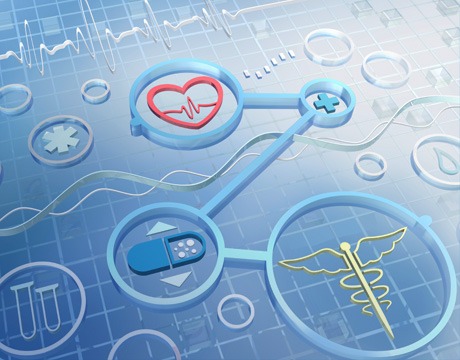Innovations in medicine, materials, and electronics.
Imagine a world where tiny particles can create monumental changes. That’s the essence of nanotechnology—a field that marries science with innovation on an atomic scale. From revolutionizing medicine to enhancing materials and transforming electronics, the applications of nanotechnology are as diverse as they are groundbreaking.
As we navigate through this fascinating domain, we’ll explore how these minute innovations pave the way for remarkable advancements and what they mean for our future. Buckle up as we dive into the transformative power of nanotechnology!
What is Nanotechnology?
Nanotechnology is the manipulation of matter at an incredibly small scale—typically between 1 to 100 nanometers. To put that in perspective, a nanometer is one-billionth of a meter, far smaller than the width of a human hair.
This field combines various disciplines, including physics, chemistry, and biology. Researchers exploit unique properties that materials exhibit at this nanoscale level. These properties often differ significantly from their larger-scale counterparts.
The applications are vast and varied. Nanotechnology enables us to create stronger materials with reduced weight or more efficient electronic components that consume less energy.
Its potential extends into medicine as well, where nanoparticles can target specific cells for drug delivery or imaging purposes. The versatility of nanotechnology makes it a pivotal area of research with implications across numerous industries and everyday life.

History and Development of Nanotechnology
The journey of nanotechnology began in the 1950s, when physicist Richard Feynman envisioned manipulating individual atoms. His ideas laid the groundwork for what would become a groundbreaking field.
In the following decades, advancements in microscopy allowed scientists to observe materials at the nanoscale. The invention of scanning tunneling microscopes in 1981 marked a pivotal moment, enabling unprecedented exploration of surface structures.
By the late 20th century, researchers started harnessing these tiny components for practical applications. The term “nanotechnology” was officially coined by K. Eric Drexler in his influential book “Engines of Creation,” published in 1986.
Since then, various disciplines have embraced nanotech—ranging from chemistry and biology to physics and engineering. Each breakthrough has expanded our understanding and potential uses within this fascinating realm, paving the way for innovations that continue to evolve today.

Applications of Nanotechnology in Medicine
Nanotechnology is transforming medicine in remarkable ways. By manipulating materials at the nanoscale, scientists can develop targeted drug delivery systems that enhance treatment efficacy while minimizing side effects.
One notable application is in cancer therapy. Nanoparticles can be designed to deliver chemotherapy directly to tumor cells, sparing healthy tissue and reducing toxicity. This precision increases the chances of successful outcomes for patients.
Additionally, nanotechnology plays a crucial role in diagnostics. Nanosensors enable early detection of diseases through rapid analysis of biological samples. These innovations promise quicker diagnoses and potentially life-saving interventions.
Furthermore, nanomaterials are being explored for regenerative medicine. They provide scaffolding for cell growth and tissue repair, paving the way for new therapies in wound healing and organ regeneration.
As research progresses, more applications will emerge, revolutionizing how we approach health care challenges with innovative solutions at the molecular level.

Advancements in Materials with Nanotechnology
Nanotechnology is transforming materials science in remarkable ways. By manipulating materials at the atomic and molecular levels, scientists are discovering new properties that were previously unimaginable.
One exciting advancement is the development of stronger, lighter composites. These materials can outperform traditional options like steel and aluminum while reducing weight significantly. This innovation has applications in aerospace, automotive, and construction industries.
Another area of progress includes smart materials that react to environmental changes. For example, self-healing plastics contain nanoparticles that allow them to mend cracks when exposed to heat or light. This ensures longer-lasting products with reduced maintenance costs.
Nanotechnology also plays a crucial role in enhancing energy efficiency. Materials engineered at the nanoscale can improve insulation properties or increase solar panel efficiency by maximizing light absorption.
As researchers continue exploring this field, we anticipate even more groundbreaking advancements that will reshape various industries and our daily lives.

Revolutionizing Electronics with Nanotechnology
Nanotechnology is transforming the electronics landscape. It allows for the creation of smaller, more efficient components that were once thought impossible.
With nanoscale materials, devices can become lighter and faster. This leads to improved performance in everything from smartphones to computers. Enhanced conductivity and reduced power consumption are just a few benefits.
Moreover, nanotech enables innovative designs that push boundaries. Flexible displays and foldable gadgets are now becoming a reality thanks to advances at the nanoscale level.
The impact on batteries is significant too. Nanomaterials enhance energy storage capacity while shortening charging times. Imagine powering your device in minutes instead of hours.
These advancements not only boost functionality but also open doors for new applications that redefine how we interact with technology daily. The future looks bright as nanotechnology continues to evolve within the realm of electronics.

Concerns and Ethical Considerations
The rapid advancements in nanotechnology bring forth significant concerns. As we manipulate materials at a molecular level, the potential for unforeseen consequences increases.
One major worry is the environmental impact of nanoparticles. How do they interact with ecosystems? The long-term effects remain largely unknown.
Health risks also come into play. Nanoparticles could penetrate biological barriers and accumulate in organs, leading to unpredictable health issues.
Ethical considerations are equally pressing. Who controls this technology? Ensuring equitable access to innovations is crucial as disparities may widen between different socio-economic groups.
Additionally, there’s a need for robust regulatory frameworks. Balancing innovation and safety will be essential as industries explore new frontiers within nanotechnology.
Public awareness plays a key role too. Engaging communities about these developments can foster informed discussions on acceptable uses and limits of nanotech applications.

Future Possibilities and Impact on Society
The future of nanotechnology holds immense promise across various sectors, creating endless possibilities that could transform our lives. As research continues to advance, we can expect even more innovative applications in medicine. Imagine targeted drug delivery systems that utilize nanoparticles to deliver treatments directly to affected cells, minimizing side effects and maximizing effectiveness.
In materials science, the development of nanomaterials is already leading to stronger, lighter products. These advancements mean more durable goods and enhanced performance in everything from construction materials to consumer electronics. The potential for energy-efficient technologies also emerges through these innovations, paving the way for a sustainable future.
As nanotechnology evolves within the realm of electronics, new devices will likely be smaller yet more powerful than ever before. Enhanced computing capabilities may lead us into an era where technology seamlessly integrates with daily life—think smart homes or wearables that monitor health metrics at a nanoscale level.
However, it’s essential to consider how these changes might affect society as a whole. While benefits abound, ethical considerations surrounding privacy and accessibility must be addressed. Striking a balance between innovation and responsibility will determine how effectively we harness this groundbreaking technology.
The trajectory of nanotechnology suggests transformative impacts on healthcare outcomes, material efficiency, and electronic functionalities—but it’s up to innovators and policymakers alike to navigate this exciting frontier thoughtfully.







